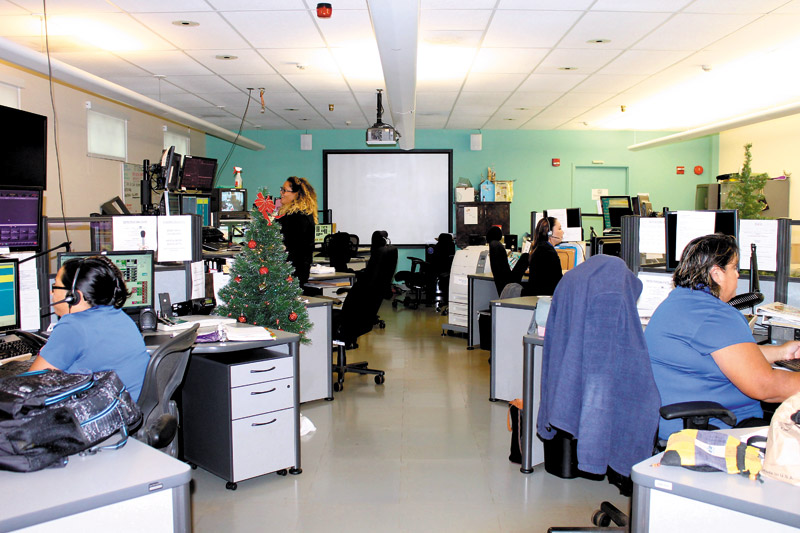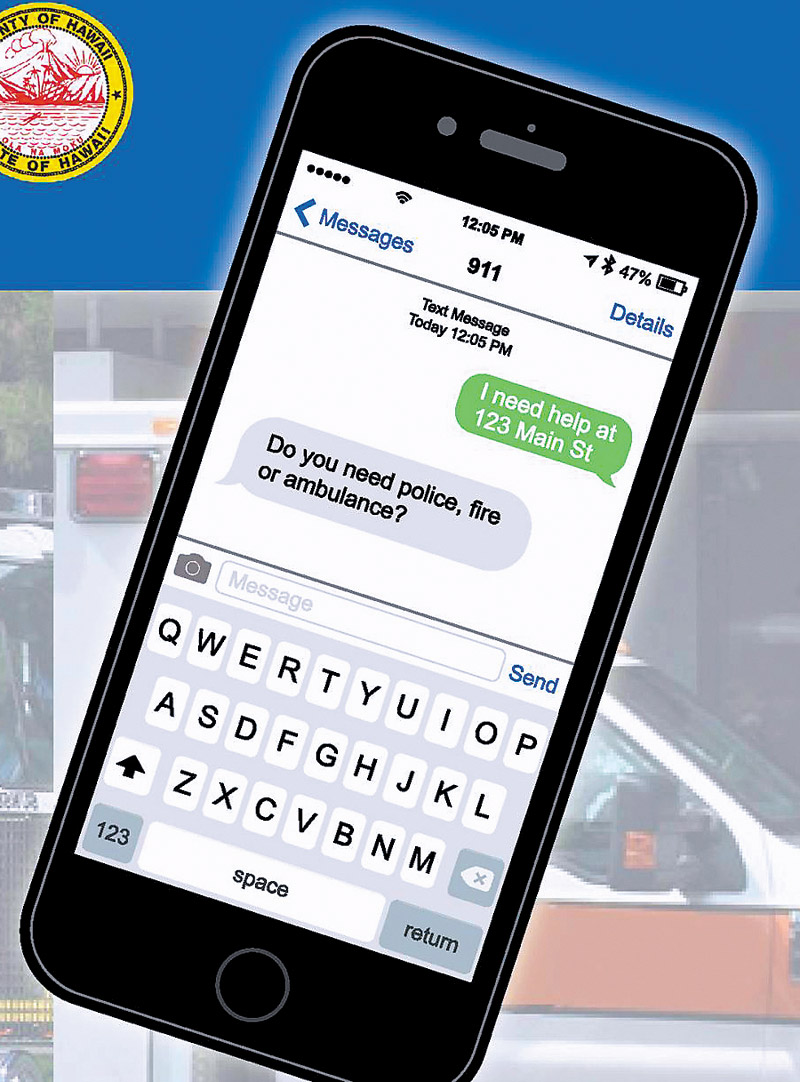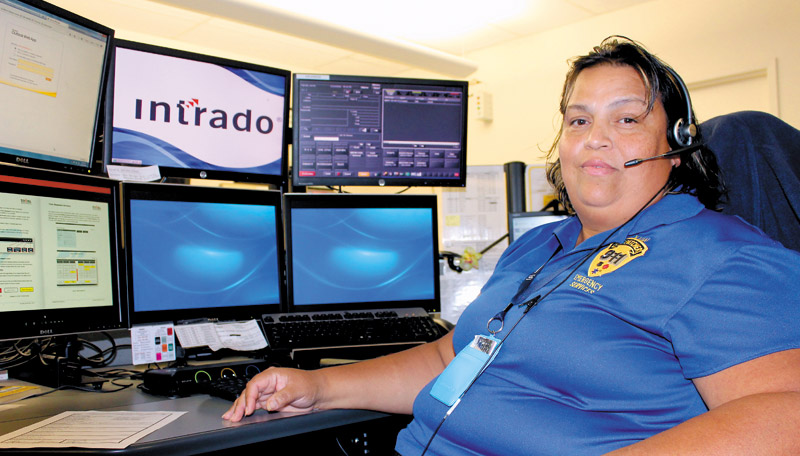On Call
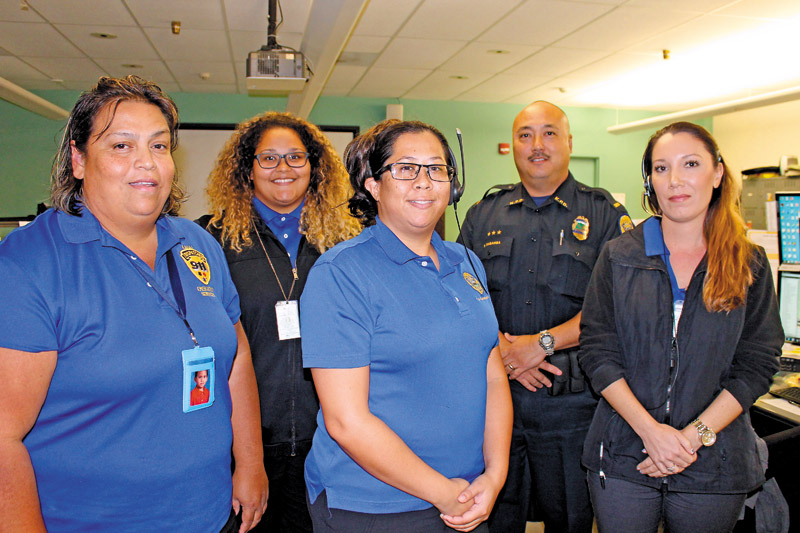
While everyone else enjoys the holidays, Lavina Taovao, Sarah Louxz, Ginger Bray, Lt. Kennison Nagahisa and Stephanie Neher are hard at work at KPD Kauai Dispatch Center
While everyone else was stuffing their faces with turkey and mashed potatoes Thanksgiving Day, Kauai Police Department’s dispatchers were hard at work.
“Tomorrow’s a holiday; we work,” says Lavina Taovao, Dispatch 3 supervisor, the day before Thanksgiving. “Criminals don’t rest.”
Many people already were rushing out of work early that day in preparation for the upcoming festivities, but Taovao sat calmly at her Kauai Dispatch Center desk, embodying a kind of composure that most people likely would be unable to maintain in her position. Her job not only requires her to work holidays, but it’s also not for the faint of heart.
On this particular day, she’s accompanied by co-workers Sarah Louxz, Ginger Bray and Stephanie Neher, who are busy fielding nonstop calls. Despite the chaos, the ladies are relaxed and go about their routine as if they were in a well-rehearsed, synchronized dance. Only this dance isn’t set to beautiful music, but instead incoming calls of distressed individuals whose lives are in a current state of emergency.
“I’m just blown away by these girls,” says Lt. Kennison Nagahisa, administrative lieutenant at the communications center. “I hear it all and I give these girls credit, multitasking and dealing with upset people all day.”
Only a certain kind of person can do what it takes to help others during frantic moments. One might even say the dispatchers are hidden heroes in the emergency response system. They are so good at what they do, Nagahisa says, that by the time police or fire department personnel arrive at the scene, the individuals have been counseled by dispatchers and their nerves eased.
“No one sees them enough or recognizes them,” says Lt. Nagahisa. “Yet, they’re one of the most important parts of the emergency response process.”
Located in what can only be described as a cave, sans windows and buried within KPD headquarters with restricted access, these dispatchers have learned what it takes to remain cool and collected despite what’s happening on the other end of the line.
“Every day is different; every hour, every minute, every second,” says Taovao. “Some days we have just your everyday calls and some days can be massive.”
She recalls one of those recent massive days, when a manhunt ensued for an escaped prisoner on a crime spree. Calls came in one right after another, many hysterical, including the unfortunate individuals who had been hijacked.
“We go home drained,” says Taovao, who has learned how to leave everything behind at the end of the day, doing yardwork to help unwind.
Stress isn’t easing anytime soon for dispatchers, as the number of calls they receive only keeps rising — car accidents are the No. 1 reason for contact, followed by domestic violence and suicide attempts, as well as ocean and hiking rescues. The week before Thanksgiving, dispatch received nearly 900 calls (including 911 and police dispatch). Since Taovao started working in the department 12 years ago, incidents have increased significantly, especially in relation to more visitor arrivals.
“It’s become more crazy,” says Taovao, citing theft and rescues as some of the top reasons people call when more visitors are on island. “It’s really changed.”
Despite the constant pressure, the Waimea High School graduate loves her job so much that she was involved in the advocacy movement that led Hawaii to become the seventh state in America to launch a text-to-911 service.
“We worked on this for a long time,” she says.
Now people can contact 911 via text, which comes in handy during situations like domestic violence when someone in trouble can’t alert the perpetrator to their action. The service is especially handy for the elderly or people with disabilities who might have trouble communicating or have a difficult time hearing.
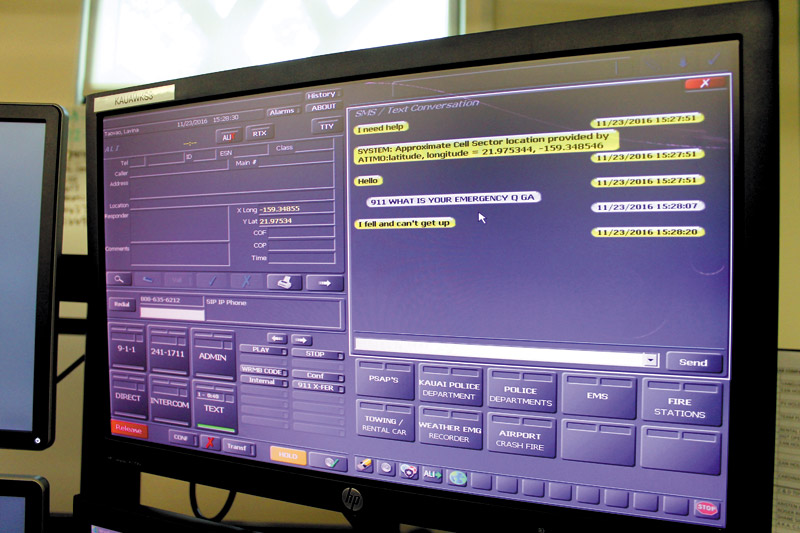
When people text to 911, they are connected to a dispatcher who can immediately respond and assist them
Text-to-911 allows users to send 160 characters at a time (no pictures or emojis). An added bonus of the new texting service is its availability islandwide, including remote areas like Hanakapiai Beach. The user’s location tracker must be turned on in their phone, however, in order for a response team to be able to find them.
“But if you can call, call. That’s the best thing you can do,” says Taovao.
No matter the method of contacting Kauai Dispatch Center, employees there know exactly what to do. They follow a strict protocol that aims at calming distressed people during emergency situations. While it’s admittedly tough, Taovao says she loves being able to connect with people and help them through their situations.
So, while everyone else is ripping open presents on Christmas or sleeping in New Year’s Day, remember the hidden heroes of emergency services, like Taovao, who are working diligently behind the scenes in order to keep the island safe and its people free from harm.
To learn more about text-to-911, visit ags.hawaii.gov/hawaii-enhanced-9-1-1-board/text-to-911.
cocomidweek@gmail.com


